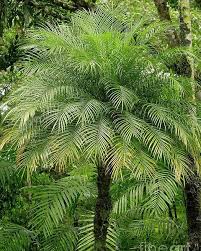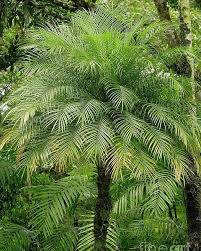Sciencetific Name: Phoenix roebelenii
Family Name: Arecaceae
Pygmy date palm is a tropical, evergreen perennial in the palm family (Arecaceae). It grows along fast-moving rivers in southern China, Laos, Myanmar, Thailand and Vietnam. Phoenix is the genus of the date palms. The meaning of the generic name is much-debated but likely honors Phoenicia, an ancient civilization from the eastern Mediterranean, where date palms were widely cultivated. The species epithet honors Carl Roebelen, a plant collector in the employ of the orchid nursery Sanders of St. Alben, England, who brought the palm to the attention of botanists.
Plant in moist, well-drained potting mix and give it protection from the hot afternoon sun since this plant prefers medium to high light. Keep the growing medium slightly moist during the growing season but do not overwater as doing so can cause root rot. This plant prefers to be slightly root-bound and does not need frequent repotting. It also prefers medium to high humidity. Keep away from cold drafts in the winter.
In nature, this palm is clustering and forms suckers at its base. Curiously, most cultivated individuals do not sucker, but growers frequently put three or five plants in one pot to make a fuller specimen. As they grow, trunks will gracefully arch away from one another. Outdoors it grows to 6.5 feet high and 5 feet wide. As an indoor plant, it typically reaches only 5 to 6 feet tall. It has soft, fine-textured foliage, but like all date palms, the lower leaflets are modified into very sharp spines. Use caution when handling the leaves. The fruits are purple drupes that are produced on female plants and are edible.
This palm is a popular landscape palm in warm climates. Elsewhere the palm can be grown as houseplant. It can spend the summers outside in a shady patio as long as it is brought inside when cold weather approaches.

